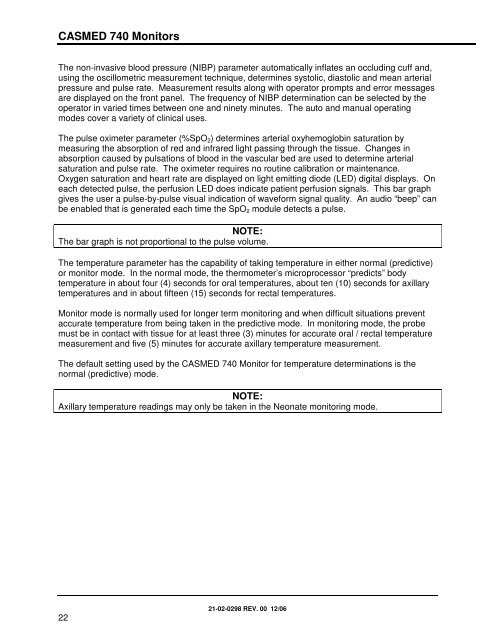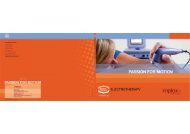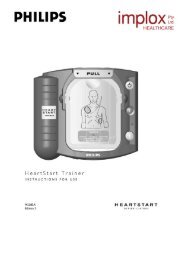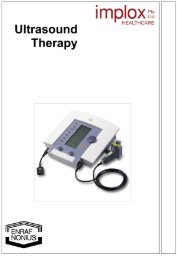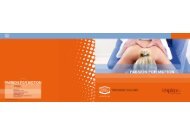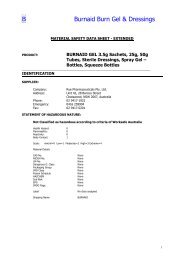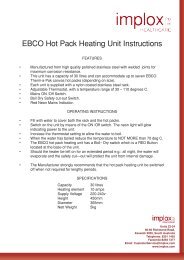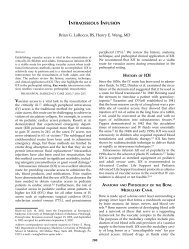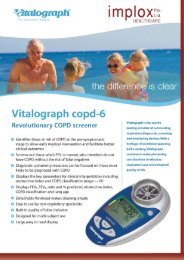CASMED 740 Vital Signs Monitor - Implox
CASMED 740 Vital Signs Monitor - Implox
CASMED 740 Vital Signs Monitor - Implox
Create successful ePaper yourself
Turn your PDF publications into a flip-book with our unique Google optimized e-Paper software.
<strong>CASMED</strong> <strong>740</strong> <strong>Monitor</strong>s<br />
The non-invasive blood pressure (NIBP) parameter automatically inflates an occluding cuff and,<br />
using the oscillometric measurement technique, determines systolic, diastolic and mean arterial<br />
pressure and pulse rate. Measurement results along with operator prompts and error messages<br />
are displayed on the front panel. The frequency of NIBP determination can be selected by the<br />
operator in varied times between one and ninety minutes. The auto and manual operating<br />
modes cover a variety of clinical uses.<br />
The pulse oximeter parameter (%SpO 2 ) determines arterial oxyhemoglobin saturation by<br />
measuring the absorption of red and infrared light passing through the tissue. Changes in<br />
absorption caused by pulsations of blood in the vascular bed are used to determine arterial<br />
saturation and pulse rate. The oximeter requires no routine calibration or maintenance.<br />
Oxygen saturation and heart rate are displayed on light emitting diode (LED) digital displays. On<br />
each detected pulse, the perfusion LED does indicate patient perfusion signals. This bar graph<br />
gives the user a pulse-by-pulse visual indication of waveform signal quality. An audio “beep” can<br />
be enabled that is generated each time the SpO 2 module detects a pulse.<br />
NOTE:<br />
The bar graph is not proportional to the pulse volume.<br />
The temperature parameter has the capability of taking temperature in either normal (predictive)<br />
or monitor mode. In the normal mode, the thermometer’s microprocessor “predicts” body<br />
temperature in about four (4) seconds for oral temperatures, about ten (10) seconds for axillary<br />
temperatures and in about fifteen (15) seconds for rectal temperatures.<br />
<strong>Monitor</strong> mode is normally used for longer term monitoring and when difficult situations prevent<br />
accurate temperature from being taken in the predictive mode. In monitoring mode, the probe<br />
must be in contact with tissue for at least three (3) minutes for accurate oral / rectal temperature<br />
measurement and five (5) minutes for accurate axillary temperature measurement.<br />
The default setting used by the <strong>CASMED</strong> <strong>740</strong> <strong>Monitor</strong> for temperature determinations is the<br />
normal (predictive) mode.<br />
NOTE:<br />
Axillary temperature readings may only be taken in the Neonate monitoring mode.<br />
22<br />
21-02-0298 REV. 00 12/06


